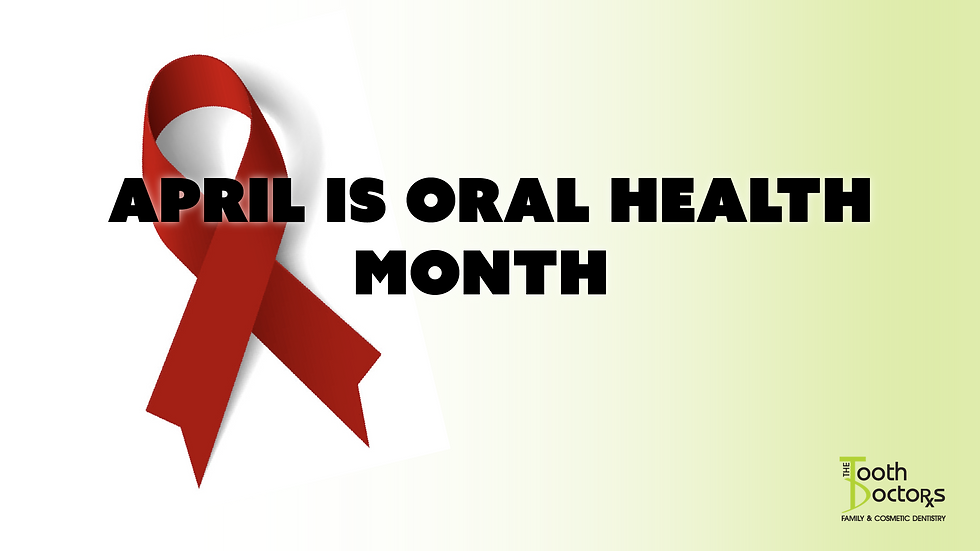Are You Ready for the Mistletoe??
- The Tooth Doctors

- Dec 9, 2011
- 3 min read
December 9, 2011 by deanna
As a dental hygienist, I often hear questions from our patients about bad breath. Since the holidays are approaching and we may see some mistletoe, I thought this might be the perfect blog for sharing a few tips for fighting bad breath or halitosis.

1. Commit to a great home care routine.
Ensure that you are doing an effective job of keeping your mouth clean. Brushing at least twice daily for at least 2 minutes at a time will help to remove food debris and bacteria accumulated throughout your day. Some people find an electric toothbrush can help to make the mouth feel ultra fresh and clean. The added benefit is that most of these brushes come equipped with a two minute timer. Be certain that you are also cleansing between the teeth and under the gumline where your toothbrush just cannot reach. While traditional floss does a great job, it is important that you utilize an effective technique, hugging the tooth to either side and sliding the floss below the gum line. If you are unsure about how to floss and think you may be injuring your gums, seek guidance. There are a number of inter dental aids on the market that your dental team would be pleased to show you.
2. Keep your tongue from becoming a “Dirty Carpet”
Most foul odors in our mouths come from decaying food particles and bacteria, which is why brushing and flossing is so important, but don’t forget about the tongue! Microscopically, the tongue is like your favorite retro shag carpet with millions of tiny filaments that will trap and harbor debris if you aren’t careful about keeping it clean. To cleanse, you may use your toothbrush to gently brush the tongue, but you may find a dedicated tongue brush or scraper to be more effective. The edge of a spoon will also work in a pinch … though I’m not sure I’d try that in a restaurant!
3. Visit your favorite dental team regularly
Regular exams an help by identifying problems in the mouth such as decay or periodontal (gum) disease which can influence the smell of our breath. During your hygiene visits, we are able to reach and clean areas of the mouth where your brush and floss just cannot. Make a point of keeping regular dental visits and staying on top of your oral health. We’ll be happy to answer your questions about your home care routine at any visit.
4. Choose chewing gum over mints
While mints can help to mask bad breath after a large coffee or that oh-so-tasty caesar salad, gum chewing is typically more helpful in eliminating the odorous evidence. Chewing gum is better shown to stimulate saliva than popping a mint. It is saliva that helps to cleanse the mouth, not only by the mechanical action of washing away debris, but with its army of natural antiseptics and enzymes which aid by killing bacteria. Just ensure that you are choosing chewing gum of the sugarless variety!
5. Drink more water
Odor-causing bacteria love a dry mouth! Be sure to drink plenty of water throughout the day to keep the mouth hydrated. Many of us don’t even realize that we are thirsty, so it’s important to make water consumption a habit. If you allow yourself to become dehydrated, your body will attempt to conserve moisture by reducing salivary production.
6. Consider a smoking cessation program
The benefits of giving up a tobacco habit are well researched and publicized. There are countless resources and products on the market to aid in cessation and the studies showing improvement in quality of life are endless. Fresher breath is just one more benefit!
If you feel you have a problem with bad breath despite a great home care regimen and regular dental visits, don’t be embarrassed to have a conversation about it. Chronic bad breath, in rare cases, can be an indication of infection or even systemic problems . . . so let’s investigate. Examining halitosis is not just about the health of your smile, but about your general health as well.




Comments